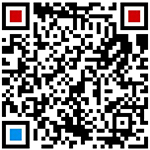The development trend of industrial design has put forward the following new requirements for the skills of designers:
Ability to apply technology
Master emerging technologies: It is necessary to be proficient in AI, Internet of Things, edge computing and other technical knowledge, understand their principles and application scenarios, so as to integrate these technologies into product design and realize product intelligence and function expansion. For example, when designing smart products, AI algorithms can be used to achieve functional self-adaptation, and devices can be interconnected through IoT technology.
Proficient in digital tools: Proficient in the use of digital twins, VR, 3D printing and other technologies for virtual verification, rapid prototyping and personalized customization of products. For example, digital twin technology is used to simulate product usage scenarios and performance in a virtual environment, find and solve problems in advance, and shorten the design verification cycle.
Focus on material innovation: understand the characteristics and application prospects of new environmentally friendly materials, flexible electronic materials, etc., be able to select appropriate materials according to the functions and needs of products, and explore innovative application methods of materials to achieve product sustainability and morphological breakthroughs.
Design Thinking & Methodology
Multi-dimensional user experience design: from the traditional appearance and function design, it has expanded to focus on the user's experience in all aspects, including the ease of use, interactivity, and emotional resonance of the product. At the same time, considering the needs and behavioral habits of different user groups, hierarchical design and personalized customization are carried out to provide a product experience that is more in line with user needs.
Sustainable design concept: The concept of sustainable development runs through the whole process of product design, from material selection, product structure design to production process, use and recycling, etc., we should consider how to reduce the impact on the environment, improve the efficiency of resource utilization, and realize the sustainability of the whole life cycle of products.
Invisible complexity management: While pursuing the multi-functional integration of the product, the minimalist design philosophy is used to hide the complexity of the product through hidden interfaces and simplified operation processes, so that the product is simple and easy to use in appearance and use.
Cross-border collaboration and innovation capabilities
Interdisciplinary Knowledge and Collaboration: Possess multidisciplinary knowledge, including engineering, materials science, psychology, sociology, etc., in order to effectively communicate and collaborate with professionals in different fields to solve complex design problems. For example, working with materials scientists to optimize material properties and working with psychologists to refine the emotional interaction design of products.
Innovation and trend insight: Be able to have a keen insight into market trends, technology development trends and changes in user needs, explore potential design opportunities, and propose innovative design concepts and solutions to help products stand out in the market.
Business model innovation: Understand new business models such as sharing economy and rental economy, and think about how to support the realization of these models through design to create new business value and competitive advantages for products. For example, design modular products that are easy to disassemble and reassemble to fit the needs of rental and sharing scenarios.
Communication and presentation skills
Clear requirements understanding and articulate: Ability to accurately understand the needs of users, customers, and team members, and translate these requirements into specific design goals and solutions. At the same time, they can clearly explain their design ideas and concepts to others, and strive for the support and recognition of all parties.
Visual and interactive expression: In addition to traditional hand-drawn and software drawing capabilities, it is also necessary to be able to display the functions and use of the product more intuitively through dynamic presentation, interactive prototypes, etc., so that non-designers can better understand the design scheme.
Cross-departmental and cross-cultural communication: When working in a multinational company or a diverse team, it is important to have good cross-cultural communication skills, be able to communicate and collaborate effectively with people from different backgrounds, and avoid misunderstandings and conflicts caused by cultural differences.
 Precision Design
Precision Design with us:15302653652
with us:15302653652

